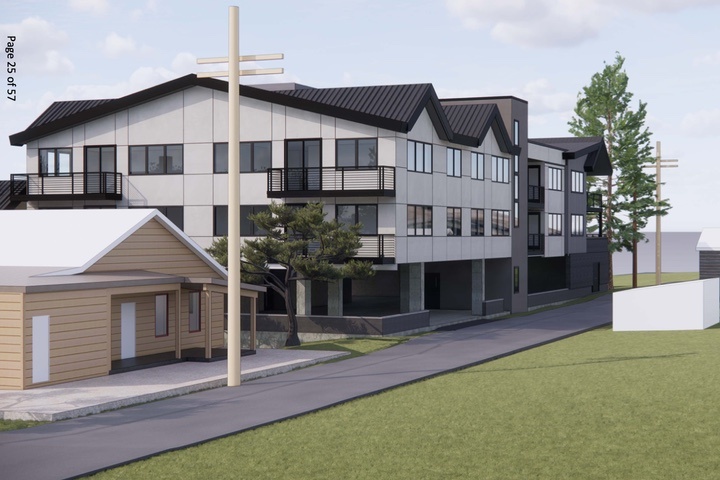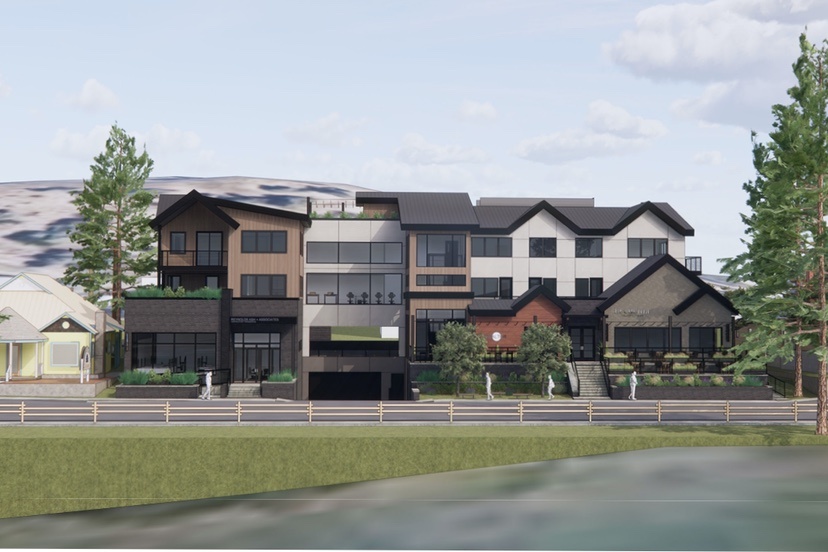At the sharp turn in downtown Pagosa, the buildings along Highway 160 cease having ‘Pagosa Street’ addresses… and the highway heading west becomes, officially, ‘San Juan Street’. I’ve never been clear as to where ‘San Juan Street’ ends. Maybe at the elementary school? At some point, going up Put Hill, the highway becomes simply Highway 160.
I’ll be writing a bit about San Juan Street, in Part Four, relative to the proposed Pagosa Views subdivision. But for now, we’ll stay focused mainly on Pagosa Street.
I expressed the opinion, in Part Two, that certain land use regulations — adopted and enforced by our Town and County governments — have played a role in creating our current housing crisis in Archuleta County.
The most serious roadblocks to solving the crisis, however, did not arise from local government regulations. The real roadblocks were written into the CC&Rs — Covenants, Conditions and Restrictions — that control development in 21 square miles of Pagosa Lakes Property Owners Association (PLPOA) subdivisions. Those CC&Rs were established back in the 1970s by Ralph Eaton and his development company, to ensure that homeowner property values within the subdivisions would remain as high as possible.
In order to retain high property values, Eaton’s company created CC&Rs that effectively prevent PLPOA from becoming a fully functional, pedestrian-friendly, urban community with a variety of housing types in each neighborhood. Under the established restrictions, PLPOA will remain forever a automobile-centric suburban bedroom community. By design.
Unlike the more flexible land use regulations established by the Town of Pagosa Springs and by the Archuleta County government, property-owner CC&Rs are, by their nature, almost impossible to change, or amend.
Basically, the Pagosa community has over 21 square miles of residential parcels that can never adapt to new social and economic conditions. The covenants and regulations are frozen, as written in the 1970s… fifty years ago.
A bit farther east, we have the Town of Pagosa Springs, incorporated in 1891, and governed by an elected Town Council. The seven members of the Town Council have extensive powers to change and amend the Land Use and Development Code that regulates development within the roughly three square miles of the municipality. Only about one square mile is currently zoned for residential dwellings. The rest is basically zoned ‘commercial’.
The three vacant lots at 232 Pagosa Street (Highway 160) are currently regulated as part of the Town’s ODE Overlay, which allows both commercial and residential developments. The three-story Eagle Mountain building recently approved by the Town Planning Commission (with certain conditions attached) is a mixed-use structure, with commercial spaces and a restaurant on the first floor and seven residential units in the upper portion.
The developers’ have publicly dismissed any intention of including ‘workforce housing’ in the development.
This could become an issue for the Town Council, should the recent Planning Commission approval be appealed. Workforce housing is one of the top three concerns in the Council’s list of important goals for 2023-2024. By approving new commercial units combined with non-workforce housing units — that is to say, by allowing the creation of new buildings that will require employees — the Planning Commission has essentially chosen to make our housing crisis a little bit worse, rather than better.
Perhaps they felt they didn’t have a choice, considering the way the LUDC is written.

Meanwhile, the political philosophy that has been guiding Archuleta County since at least the 1970s is: the more we can increase our full-time population, and the more we can increase tourist visitations, the better for everyone.
That philosophy, unfortunately, ignores an important reality. The more retirees Pagosa attracts, and the more tourists Pagosa attracts, the larger workforce we need to serve the retirees and tourists.
The larger workforce needs housing, and a living wage.
In some American communities, laws have recently been put in place, requiring a new, incoming business to provide new housing to accommodate the number of employees that the business will require. We have not imposed such requirements in Pagosa Springs, nor are we likely to in the near future, to judge by our current leadership.
In 2017, the Town of Pagosa Springs invited a group of consultants to visit our community and analyze our social and economic challenges. The group — Smart Growth America — argued that, instead of creating more suburban subdivisions, the Town needed to focus future development within the existing urban areas where infrastructure already exists, close to existing jobs, close to existing transportation. They also recommended expansion of the Springs Resort, continued marketing to attract more residents and tourists, investments in broadband, and…
7. Look for opportunities to increase affordable housing within and connected to downtown, including for Millennials and an aging population, along with the complementary services required to meet daily needs…
Due to outdated CC&Rs within the 21-square-mile PLPOA, it’s unlikely that affordable housing will be developed within those subdivisions. Nor does it seem likely that PLPOA property owners, in general, want to see affordable housing built within their subdivisions.
The most reasonable and practical way to address Archuleta County’s housing shortage is to somehow incentivize developers to create workforce housing within Pagosa’s downtown core, and in other, more urban areas that are not limited by unchangeable covenants and restrictions.
The three parcels at 232 Pagosa Street would have been an ideal site for workforce housing, but the Planning Commission has approved what is essentially the opposite of affordable housing — a development that will likely serve to make our crisis worse.
In the case of Eagle Mountain, what the developers want to build is the antithesis of what the community needs.
Given our current LUDC and our continued embrace of private property rights, we can’t require developers to build what the community needs most; we can only prevent them from violating the LUDC.
The LUDC, however, can be changed. Forward-thinking Council members could direct the Town staff to make changes… to help ensure “smart growth” instead of “the status quo.”
Perhaps those changes can be made… before it’s too late?

